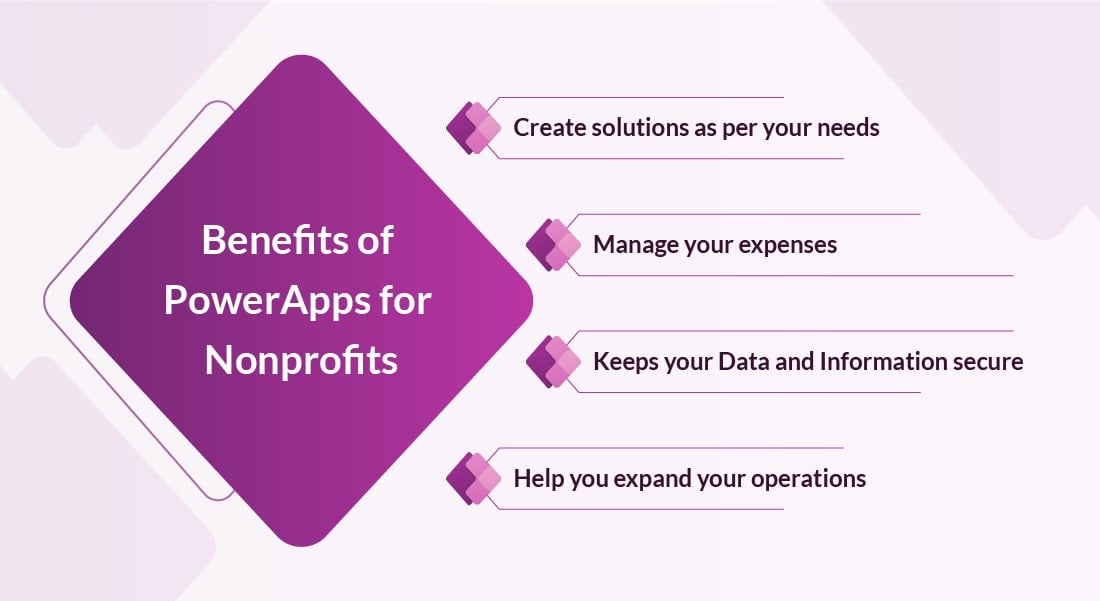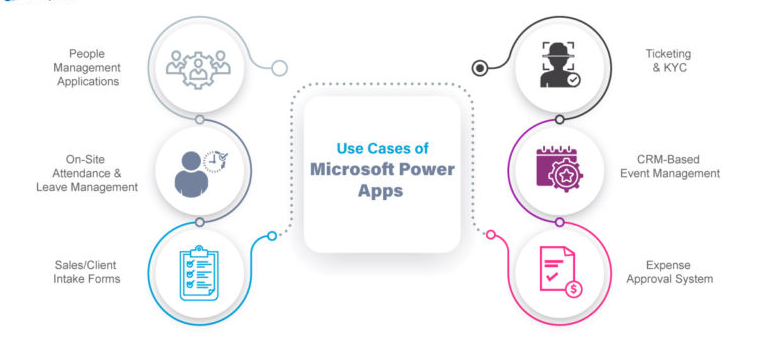You might be aware of Microsoft PowerApps development, its popularity, and the reason for becoming a favorite tool of citizen clients for custom application development. It is the best tool for business progression regardless of industry.
Diverse professionals have varied needs based on their roles, industries, and organizational contexts. Let’s walk through the common needs of diverse professionals.
What exactly are the needs of Diverse Professionals?
PowerApps Licensing: Professionals from different backgrounds require licensing under the Office365 platform. The choice of licensing plan depends on the specific functionalities aligned with their business requirements and it ensures access to specific business requirements.
Microsoft Account: A Microsoft account is necessary for accessing Power Apps whether it is a personal account or an account provided by an organization.
Connectors: In Power Apps connectors serve as bridges that enable the platform to interact with various external services, data sources, and systems. Professionals need to understand the various connectors available and select the ones that align with their data sources and integration requirements.
Requirements: One needs to define the app’s purpose and functionality properly.
When you work with Microsoft 365 development platforms, understanding and addressing these needs helps professionals maximize Power Apps in their diverse work environments.

What Professionals expect in PowerApps for Business Transformation?
Power Apps can transform business operations by providing a low-code platform that empowers users to create custom applications tailored to their specific needs, listed as below.
Rapidness with PowerApps Development
PowerApps allows to development of custom applications rapidly with minimal coding. This makes it easy for businesses to change requirements and market demands.
Process Automation with Microsoft PowerApps
In Business manual tasks can be automated using PowerApps. This ensures more efficiency with smoother operations.
Data Integration support in Microsoft PowerApps
Professionals can seamlessly integrate with data sources, including Microsoft 365, SharePoint, and external databases using PowerApps and this integration ensures that applications have access to up-to-date and relevant information.
Enhanced Collaboration while Microsoft PowerApps Development
By using PowerApps teams-based activities are easily managed like a shared project dashboard or a collaborative task management app.
Benefits clients with cost savings
Low code style reduces the business person’s reliance on professional developers, leading to cost savings in application development. Persons can achieve their objectives without any budget constraints.
Customized Solutions with Microsoft PowerApps
Anyone can customize their solution anytime without extensive coding efforts. This flexibility empowers organizations to address specific challenges and optimize workflows efficiently within a user-friendly environment.

Scalability while Microsoft PowerApps Development
It allows to start with small simple applications and later can scale up to more complex solutions as their needs evolve. It handles increased user numbers, and data complexity and integrates with external systems efficiently providing robust governance and security. Continuous monitoring and cost-effective resource management contribute to a scalable and responsive platform.
Seamless Mobile Accessibility with Microsoft PowerApps Development
Power Apps supports mobile applications, providing businesses with the ability to access and update information on the go. It is beneficial for all the employees who use their mobile in their roles.
Real-time Analytics
It integrates with Power BI to embed real-time analytics and visualizations with their applications. This engages clients to go with information-driven based on the latest insights.
Microsoft PowerApps Application development for Problem-solving
Microsoft Power Apps solves various business problems providing solutions to enhance efficiency, collaboration, and overall effectiveness. challenge is the reliance on manual and paper-based processes, leading to errors and inefficiencies. Power Apps resolves this by enabling the automation of workflows, minimizing manual efforts, and introducing digital forms for streamlined data entry. One more issue is the inflexibility of software that often fails to meet the unique business requirements. Power Apps provides a solution by allowing users to develop custom applications as per their specific needs.
One needs to depend on IT for application development, which can be a bottleneck for businesses with resource constraints. Power Apps tackles this challenge by empowering non-technical users to create applications with minimal coding, reducing reliance on IT departments. High development costs associated with traditional methods are reduced with PowerApps low-code approach, making application development more accessible, especially for smaller businesses. PowerApps helps the apps that work smoothly on phones and tablets, making it easy for people to use them anywhere. It makes sure that the apps it creates are super easy for people to use. No more confusing buttons or complicated screens are all user-friendly. Traditional software development can be expensive, particularly for smaller businesses with limited budgets. PowerApps low-code platform reduces development costs, making it more accessible for businesses with tighter budgets.
By addressing these common business application problems, Power Apps provides organizations solutions for creating custom applications with their unique needs and challenges.
Describe how user-centric PowerApps contribute to a seamless transformation journey
User-centric PowerApps make a company run effectively. These apps focus on what users need and how they work, making everything easy and working. PowerApps makes sure the apps are super easy to use. There are no confusing buttons or confusing screens – it is all made with the user in mind. This means people can get their work done faster and with less difficulty. You don’t need to be a tech expert it is as simple as sharing your ideas. It’s all about making things easy without any complicated technical stuff – just straightforward simplicity.
PowerApps enables employees to share feedback and ideas to enhance the apps. This collaborative interaction empowers companies to continually improve and adapt according to the evolving needs of their workforce.
PowerApps also make it easy for employees to use apps on their phones or tablets. This means they can work from anywhere, which is super handy. And, when people can work easily. It allows customization of the applications to suit individual user preferences, roles, and responsibilities. With a user-friendly interface and integration capabilities, Power Apps accelerates application development, and innovation, and enhances business efficiency.
User-centric PowerApps prioritize the components and elements in application development, recognizing that the success of digital solutions relies on the acceptance and satisfaction of the individuals who interact with them daily. By focusing on the user experience, PowerApps aims to ensure that every aspect of the application aligns with the preferences, needs, and expectations of the end-users through iterative testing, feedback collection, and continuous refinement that impact positively users on a day-to-day basis.
Long-term impacts of Microsoft PowerApps Development Platform
The long-term impacts of using the PowerApps platform extend across various aspects of an organization’s operations, innovation, and adaptability. Here are key considerations:
Over time, one of the advantages is a substantial boost in productivity. PowerApps excels in custom applications that match specific workflows and business processes. This streamlining of operations not only cuts down on manual efforts but also significantly improves overall workforce efficiency. Cost savings is another significant long-term impact. The low-code approach set by PowerApps significantly reduces development time and associated costs compared to traditional software development. Additionally, the seamless integration with existing Microsoft 365 tools contributes to ongoing cost efficiency.
One of the most long-term impacts is the enhancement of the user experience. The platform’s commitment to user-centric design ensures that applications remain intuitive and user-friendly over the long term, leading to high user adoption rates and user satisfaction. The PowerApps platform transforms organizations into more agile, innovative, and cost-effective apps, to navigate the complexities of the future with ease.
Conclusion
PowerApps empowers users to build applications tailored for long-term benefits, fostering team collaboration and enhancing overall productivity for improved performance.
For an organization, it results in a win-win situation where they not only save time and costs but also enable knowledge exchange between departments, breakdown of technical barriers, and establish a healthy work culture.